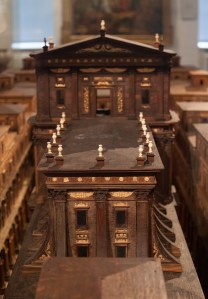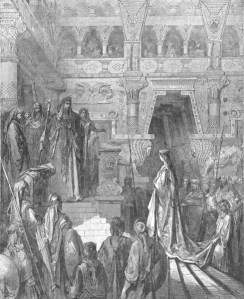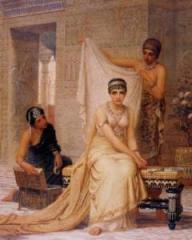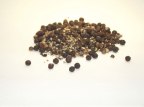After 400 silent years, God was speaking through a new prophet who called people to repentance and promised someone greater to come.[1]
Before John the Baptist was born, an angel told his father astounding things about his son. He would have the Holy Spirit before birth. He would never drink wine or alcohol. He would become a great man and turn many people to God. He would preach repentance and prepare people for the Messiah.
Under inspiration of the Holy Spirit, Zacharias prophesied that his son would be called the prophet of the Highest; for you will go before the face the Lord to prepare His ways, to give knowledge of salvation to His people by the remission of their sins (Luke 1:76-77). With responsibilities of such importance, why did John live an austere life in the desert?

An illustration of John the Baptist preaching about the Kingdom of Heaven, from the 1875 Young People’s Illustrated Bible History (Photo credit: Wikipedia)
John’s message was not a soft one. Like the desert itself, his words were challenging, a shaking of the status quo, an awaking to essentials of change. As Jesus said of John: But what did you go out into the wilderness to see…a man clothed in soft garments? Indeed, those who wear soft clothing are in kings’ houses. But what did you go out to see? A prophet? Yes, I say to you, and more than a prophet. For this is he of whom it is written: “Behold, I send My messenger before Your face, who will prepare Your way before You.” Assuredly, I say to you, among those born of women there has not risen one greater than John the Baptist (Matt. 11:8-11).
Zealous and bold, John poured himself into a brief, galvanizing ministry. He drew crowds of people from Jerusalem. Multitudes came to be baptized and “ with many other exhortations he preached to the people” (Luke 3:18). John’s lifestyle befitted the role of a prophet in the manner of Elijah.
John’s Diet
It’s curious that we remember so readily unusual things about a person. For example, remembering John’s diet of locusts and honey. To most of us in the western world, locusts seem unappetizing. Even in ancient Israel “insects in general were considered dirty and defiling.”[2] However, these insects make it on the list of foods suitable for human consumption (Lev. 11:20-23). Other desert dwelling creatures like snakes, lizards, geckos, toads, hawks, spiders, centipedes, bobcats, turtles, mice, camels, coyotes, John would not have eaten. Locusts were one of the few clean sources of protein available to him in the wilderness. Composed of 60-75% protein, locusts, when combined with honey, made a nutritious diet.
How John prepared the locusts or if he ate them raw, the Bible doesn’t say. Current recipes for cooking locusts feature them boiled in water, toasted over coals, roasted on skewers, fried in oil, stewed in sauces and sun-dried with salt. Directions for the roasted/toasted/fried and salted versions call for removing the heads, wings and insides, leaving just a crunchy exoskeleton. Sun-dried locusts store indefinitely. Dried and ground into powder, the meal can be mixed into flour or stirred into liquid (a handy protein shake?). http://www.fao.org/ag/locusts/en/info/info/faq/ Check out interesting facts about locusts in the linked article, including recipes for cooking locusts—stuffed with peanuts? Mixed into guacamole for stuffing tacos?
What Kind of Locusts?
The Biblical account of edible insects is brief.
Yet these you may eat of every flying insect that creeps on all fours: those which have jointed legs above their feet with which to leap on the earth. These you may eat: the locust after its kind, the cricket after its kind, and the grasshopper after its kind (Lev.11: 22).
Entomologists have filled out the description. Locusts and grasshoppers have six legs: four of the legs end in feet for creeping on the ground and two of the legs, the hind ones, are tall and jointed for leaping and hopping. Scientists say that grasshoppers and locusts aren’t significantly different. Both eat grass, grains, cotton, leaves, fruits and vegetables. The NKJV gives the edible insects from the grasshopper family four descriptors: locust, destroying locust, cricket and grasshopper. Other translations of the Bible name them bald locust, beetle and katydid. The prophet Joel used four words to describe them: gnawing locust, swarming locust, creeping locust, and striping locust. And still more names: desert locust, migratory locust and Moroccan locust. Most likely, John ate what is known as the desert locust.
John’s Other Diet
I’m not inclined to try a diet of sun-dried locusts and honey. But John’s other diet is compelling. He fulfilled the purpose for which he was born. Like Jesus Christ, his food was to do the will of God and finish the work he had been given (John 4:34).—Mary Hendren









